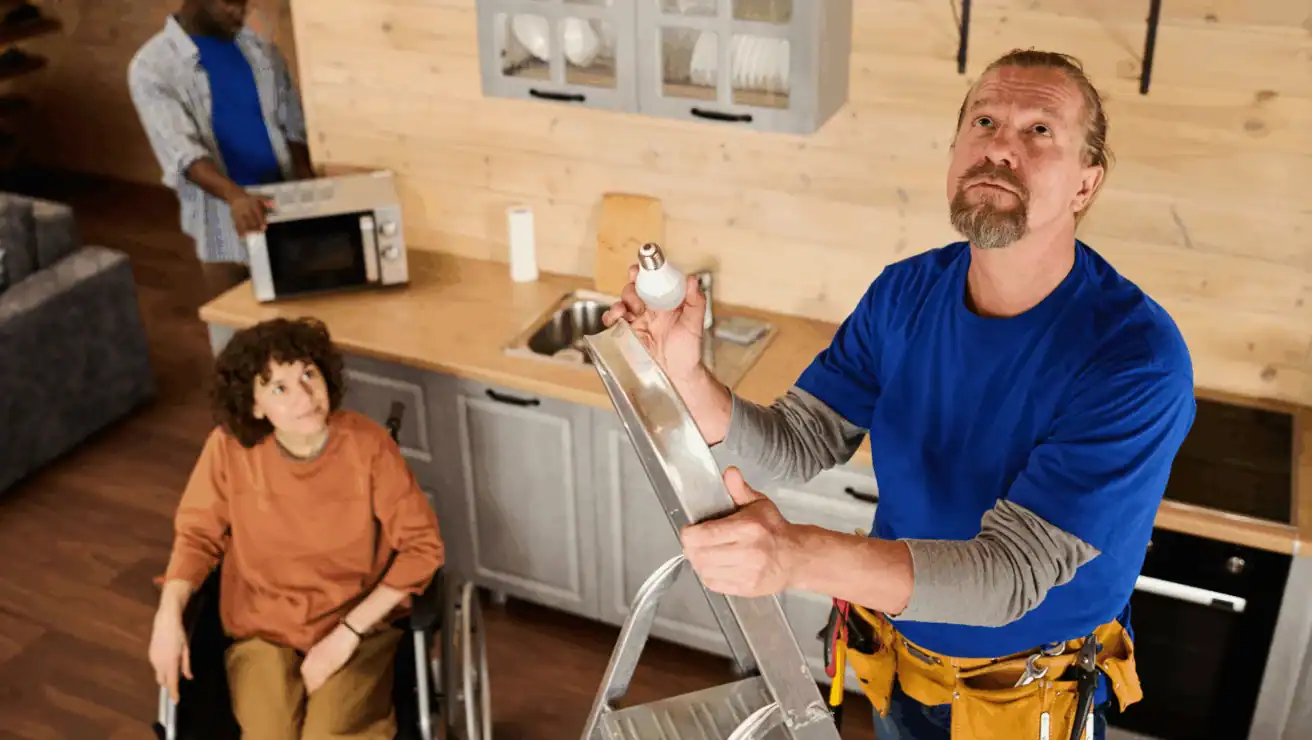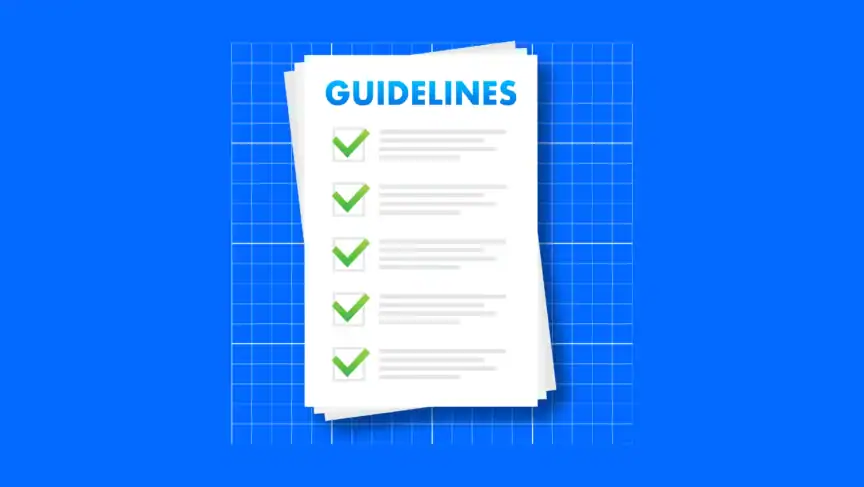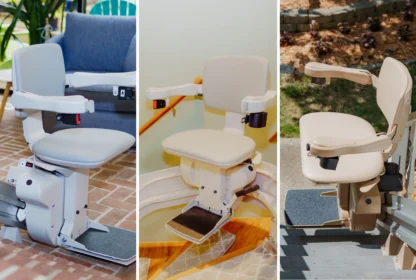
Home is where you’ve gathered with loved ones, created memories, and celebrated milestones. But the same home that made sense for running around with little ones may not be built for your golden years.
Aging in place refers to the ability to live in your own home safely, independently, and comfortably as your needs or ability level change over time. Instead of moving to a senior living facility or assisted living, you receive necessary support services as needed.
The majority of older Americans want to stay in their communities, according to AARP. Their 2024 survey found that 75% of adults aged 50 or older want to remain in their homes as they age. But to do so, over half (51%) said they would need home modifications to support this, including grab bars (72%), entryway enhancements (71%), and kitchen upgrades (39%).
Navigating the Costs: Paying for ADA Home Modifications
ADA home modifications are essential for independence, not just aesthetic improvements to your home.
As a quick reminder, the Americans with Disabilities Act (ADA) was signed into law in 1990 to protect people with disabilities against discrimination in employment, public accommodations, transportation, and beyond. In order to be compliant, businesses must make reasonable ADA workplace accommodations to assist those living with disabilities. Some requirements include:
- Accessible hardware on doors
- Accessible parking
- Height requirements for bathroom sinks, stalls, and toilets
- Railings and grab bars in appropriate locations
- Furniture arranged to reduce service barriers
- Doors wide enough for wheelchair users
- Ramps with appropriate length, width, and slope ratio
The ADA does not regulate personal homes, but can provide a baseline for accessibility best practices. The same principles of accessible design can be applied to residences under the umbrella of ADA guidelines for home modifications.
Renovations of any kind can be expensive, with Home Advisor finding reporting an average expense of $52,236, or $15 to $60 per square foot, for a typical remodel. But for accessibility renovations, the number can be very different.
At 101 Mobility, we know the importance of creating a safe environment and maintaining the independence of staying at home. This guide can help you navigate financial assistance programs for home improvements related to accommodating medical issues or special needs and aging in place designs.
Key Funding Programs & Financial Resources

Medicare does not cover home modifications, such as ramps or widened doors for improving wheelchair access. But there are still federal, state, and local programs that can help. Additionally, there are always traditional funding methods like loans and financing.
Federal & State Grants for ADA Home Modifications
- The U.S. Department of Agriculture’s 504 Home Repair program provides grants of up to $10,000 to low income seniors to remove health and safety hazards. This grant is limited to single-family homes in select areas through the Rural Development program.
- The Department of Housing and Urban Development (HUD) furnishes grants through the Older Adults Home Modification Grant Program. The program provides up to $5,000 per household for home modifications to help seniors age in place.
- Medicaid Home- and Community-Based Services (HCBS) waivers are a provision that allows states to provide services such as home modifications to certain groups outside of standard Medicaid. To be eligible, you must opt in to the waiver program.
For additional state funding, the HUD website has a state directory for housing issues and can help quickly identify home accessibility opportunities at a state level. Additionally, the National Directory of Home Modification and Repair Resources has an interactive map with many resources that homeowners can explore while researching funding options.
Federal Grants for Veterans
If you’re a U.S. military veteran affected by a disability due to your service or a veteran looking for funding as you age, there may be additional federal programs available to help subsidise disability accommodations.
- The Home Improvements and Structural Alterations (HISA) grant is a VA home improvement grant that provides upgrades and structural alterations within the homes of veterans in order to create more accessible and safe spaces. It covers a variety of medically necessary home modifications and is administered through the VA Prosthetic & Sensory Aids Service.
- A Specially Adapted Housing (SAH) grant provides funding to veterans with severe service-connected disabilities. Eligible service members can receive up to $121,812 to buy, build, or change their home. This program is extremely limited, with a cap of only 120 awards per year.
- A Special Home Adaptations (SHA) grant awards up to $24,405 to veterans with a qualifying service connected disability.
Loans and Financing Options
Traditional financing is a tried-and-true method of funding a home renovation project. These include leveraging the equity you’ve already built up in your home or seeking non-equity options like personal loans.
Leveraging Equity
If you’ve lived in your home for some time or otherwise have a lot of equity built up, traditional banks can provide funding backed by that value.
- A Home Equity Line of Credit (HELOC) operates like a credit card, meaning you have a limit you can spend up to and only have to repay what you use, but backed with the equity of your home. You can typically draw up to 85% of your home’s value, minus your outstanding principle. HELOC interest rates are variable, meaning the rate can change month to month.
- A Home Equity Loan gives you a one-time, one-lump sum payment backed by your home’s value. The interest rate is fixed and you have a regular monthly payment.
- Cash-out Refinancing replaces your existing mortgage with a larger one. You would be paid the difference between the current mortgage’s balance and a new, larger loan.
- A Reverse Mortgage is a special type of home loan only for homeowners over 62 years of age. Instead of making payments, the lender pays you. Reverse mortgages do not need to be repaid until you no longer live in the home, though interest does accrue over that time.
Traditional Financing or Financing Without Equity
If you can’t or don’t want to borrow against your home value, there are still ways to afford AD modifications to your home.
- A Personal Loan provides a lump sum to be used on anything, including home renovations. A personal loan is based only on your credit and income and is often funded much faster than an equity-based loan, which involves time-consuming underwriting and appraisals.
- Credit cards are a great option for smaller projects that you foresee paying off quickly. You may consider a new card with a low introductory rate if you know you’ll be able to pay for the renovations in a relatively short window.
Tax Deductions & Insurance
You may be eligible to deduct the cost of home modifications on your federal income tax. Consult with a certified public accountant to confirm eligibility requirements. You may also be able to claim a deduction for the costs of operating and maintaining the modifications, whether or not the stairlift, ramp, or other equipment qualified as a medical expense.
You should also check your insurance policies. The National Association of Home Builders says that some programs (auto insurance, worker’s compensation, long-term care policies, state catastrophic accident insurance plans, and medical trust funds) might cover the costs of a home modification.
What Are the ADA Guidelines for Home Modifications?

While the ADA does not regulate private property or homes, it can provide a baseline for best practices. If you’re looking to make your home more disability-friendly, following the standards set in place by the ADA can be a great starting point.
101 Mobility has created a checklist of guidelines for each room in your home.
Entryways and Living Rooms
- Install Threshold Ramps: Ramps make doorways easier to navigate and help with seamless transitions. At 101 Mobility, we offer a variety of wheelchair ramps designed to make your life easier and safer, from modular ramps and multi-fold ramps to threshold ramps. Learn more about how mobility scooters go up ramps. ADA guidelines have clear slope, width, and length requirements to make them easily navigable.
- Remove Obstacles: Make hallways as barrier-free as possible by removing rugs to eliminate trip hazards and arranging furniture to create a clear path.
- Widen Hallways: ADA guidelines state that hallways should be at least 36 inches wide to be easily navigable.
- Choose Conscious Seating: 101 Mobility offers lift chairs that make transitioning from sitting to standing easier.
Kitchen
- Lower Countertops: Lower your kitchen countertops to easily reach items and make meals. The maximum height for kitchen surfaces should be 34 inches above the floor, according to the ADA.
- Instal Single-Lever Faucets: Single-lever or touch faucets eliminate the need to twist handles.
Bathrooms
- Use Non-Slip mats or Strips: Place these items in the tub or shower and on the floor to greatly increase traction.
- Install Grab Bars: Grab bars can help provide an extra layer of support when moving around the bathroom. They’re especially useful near the toilet and in bathing areas. Check out 101 Mobility’s grab bars that can be installed on almost any surface and in almost any location.
- Make Counters Accessible: To meet ADA guidelines, counters should be easily navigable by wheelchair users. This means they should be open underneath and the appropriate height to use when sitting.
- Add a Barrier-Free Shower: Installing a barrier-free shower or handicap tub as a bathroom aid for seniors can give those with limited mobility more autonomy when it comes to staying clean.
Bedrooms
- Lower Bedframes: To make transitioning to bed easier, the International Building Code-American National Standards Institute recommends all beds should be between 17 and 23 inches tall.
- Lower Closet Rods: The ADA states that clothes rods should be no taller than 48 inches.
Stairways
- Install a Stairlift: Navigating to a second story can be challenging for seniors. At 101 Mobility, we offer a wide variety of stairlifts and can even customize them to fit your unique home and needs. From standard straight stairlifts to curved and outdoor stairlifts, we have something to improve your mobility.
- Monitor Handrails: The ADA requires handrails on both sides of a stairway. If your stairway has a switchback, the handrail should continue along the railing.
Whole Home Recommendations
- Install Lever Handles: Lever door handles can be easier to handle than twist knobs for those with limited hand mobility.
- Add Accessible Light Switches: The ADA requires that light switches be placed anywhere from 15 to 48 inches high. Additionally, a plate rocker switch can be easier to use than a toggle switch.
- Check Flooring: Rugs and high-pile carpet can cause tripping hazards throughout your home. Opt for rugs with a non-slip backing or remove carpets that may be especially dangerous when trying to prevent falls.
- Monitor Doorways: 101 Mobility offers automatic door openers that can help you unlock, unlatch, and hold doors open, reducing struggle and strain—and home fall risks in the process.
- Install Brighter Lighting: Explore your options when it comes to lighting systems, as this is an especially important component of home safety for seniors. You may also want to think about having motion-sensor lights installed both indoors and outdoors.
Your Partner in Accessibility: 101 Mobility’s Role
ADA home modifications are about more than just buying the right products. When looking at ways to make your home more accessible, meeting with an expert is key. At 101 Mobility, we offer free consultations, where our professionals can help identify hazards, assess your needs, and more to find solutions right for you. When you meet with a consultant, we can work to find an accessibility option that meets your needs and fits your budget.
We offer a wide range of products designed to help you or a loved one live more safely and independently. Check out our stairlifts, ramps, vertical platform lifts, grab bars, and more, all designed to increase mobility in the home and help you age in place.
If you’re ready to make changes to your home that can keep you safer and more comfortable, schedule a free no-pressure consultation now.



